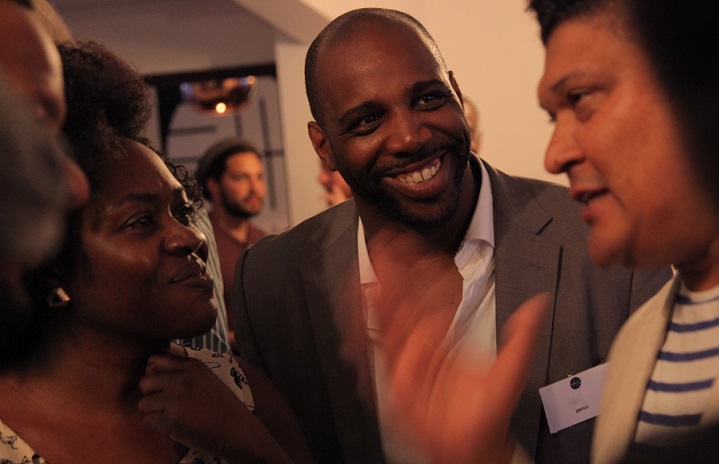
Photo: MeWe360
A move towards self-determination
Could business hubs and hatcheries help address the current diversity imbalances in the arts, asks James Doeser.
I’ve been making friends at MeWe360, helping them to understand and absorb research on the subject of arts policy and diversity. MeWe360 is a charitable organisation that provides mentoring, networking and support to entrepreneurs in the creative industries with a focus on black and minority ethnic artists and creatives. It has just put out the first in a series of provocations and I was one of a handful of external experts to help them with the report.
the arts sector can be very conventional and bureaucratic when it comes to matters of professional development and employment
My primary contribution was to look at the history of diversity policies over the past 15 years. A cursory survey of 15 Arts Council England (ACE) annual reports from 2001 onwards uncovered accounts of the following endeavours: Decibel, Inspire, Roots, Whose Theatre, Inscribe, Positive Action Trainee Programmes, Black Regional Theatre Initiative, Arts Capital Programme and Making the Map.
There have been huge cultural and demographic changes in the UK over the past 15 years, and yet there has been no parallel change in the composition of audiences and the workforce in the traditional arts and culture sector. Can anyone claim in good faith that this catalogue of policies has been successful?
A new approach
An underlying contention from MeWe360 is that the current approaches to diversity in the UK largely echo their ancestor policies that feature in 15 years of ACE annual reports. The main mechanism used to affect change is funding: directing money and resources to benefit BAME individuals or BAME-led organisations.
Can something as complex and intractable as the barriers, biases and structures that lead to a lack of equity, representation and recognition for BAME artists, creatives and organisations ever be fixed with a pile of cash? I’m not so sure, especially when it’s not always clear what ‘fixed’ actually means. It’s time for a different approach.
Self-determination
The diversity debate has been dominated by themes like representation and equity, and a search for explanatory causes for a lack of either. These big themes intertwine in complex ways that too many people habitually oversimplify. There is a fabulous piece written about the history of equity in the US arts sector by the team at Createquity.
In it they disentangle so much of what gets knotted together when we talk about diversity. They pick out four primary visions for what advocates seek to achieve in the arts: diversity, prosperity, redistribution and self-determination. People elide these at their peril, although achieving one may in turn satisfy or negate the need to pursue another.
A different approach would be to rethink the endgame entirely. That is what I feel the MeWe360 provocation is seeking to do. The arresting conclusion is as follows: Our hope is not that BAME organisations become ‘NPO-ready’ and require an endless supply of government grants, but rather are equipped to stand on their own two feet and shape their own future. The primary objective of MeWe360 is to foster self-determination.
Business hubs and hatcheries
One of the refreshing aspects of the lively conversations I’ve had with MeWe360 is about its vision for a reconfiguring of public policy in our sector. I’m not an agent or booster for MeWe360 in particular, but I can see how business hatcheries, incubators and catalysts are possibly a much-neglected vehicle through which to achieve sustainable long-term change. I feel like the rhetoric of investment (no one does ‘subsidy’ these days) must be matched by action. And this does happen in places.
But why don’t hubs, hatcheries and catalysts feature more prominently in the debates around diversity? I have a couple of impressionistic thoughts. For all of its creative pretentions, the arts sector can be very conventional and bureaucratic when it comes to matters of professional development and employment. There have been attempts to engineer entities into existence to satisfy an aching policy need for greater BAME representation in our sector (the policy need is, controversially perhaps, not always matched with a workforce or audience demand), and their precarious fate leads to problems down the line.
Related to this is that many of the solutions proposed to increase diversity are pointed at employers who should do more to attract, recruit and retain BAME staff. All very important. But this then neglects another approach: which is to help create not more BAME employees but BAME employers and entrepreneurs. Self-determination could be the route to redistribution, equity and prosperity.
Someone’s got to jolt the status quo. MeWe360 will hopefully get people talking. I’m not convinced that more funding in pursuit of the same policies is necessarily the way to go. There are lots of young BAME artists and creatives who want to shape their own lives and their own work. Maybe they are the change we want to see?
James Doeser is a researcher and writer.
jamesdoeser.com
Tw: @jamesdoeser
Join the Discussion
You must be logged in to post a comment.